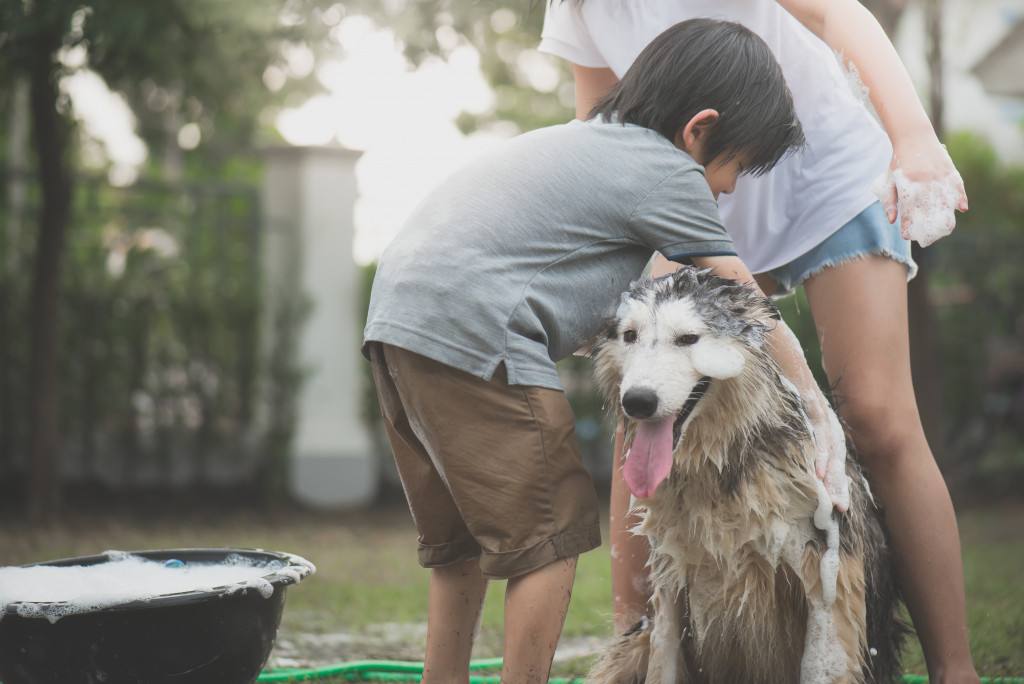- Consider your living situation and lifestyle to ensure you can provide a pet with the necessary space and care.
- Understand the responsibilities of pet ownership as bathing, grooming, and visiting the veterinarian.
- Assess your child’s age and maturity level before committing to a pet; they must be old enough to understand the responsibilities.
- Look for signs of interest in animals and an ability to follow the rules.
- Ensure your child is willing to help care for the pet daily.
Getting a pet for your child is a big decision. Pets can be great companions for your children and teach them many valuable lessons. However, before bringing any type of pet into your home, there are several things you need to consider.
Many factors must be considered, from your living situation to the type of pet you want. This blog post will discuss some of the most important things you must consider before giving your child a pet.
Your living situation
Before bringing a pet into your home, you need to think about your living situation. Do you own or rent your home? If you rent, does your lease allow pets? If you own your home, do you have a yard or enough space for a pet to exercise? Considering these factors is essential because you don’t want to bring a pet into a home where it isn’t welcomed or lacks space.
In addition to your living situation, you also need to consider your time for a pet. Do you and your family have enough time to care for a pet? Pets require regular feeding, exercise, grooming, and trips to the veterinarian. The pet must be well taken care of by its owner.
Pet-ownership responsibilities

Owning a pet is a big responsibility; your child may initially not understand the implications. As a parent, you must guide them in understanding the responsibilities of owning a pet. One of the most important things that they need to learn is how to bathe and groom their pet to prevent them from having ticks that may result in serious health issues.
For instance, a dog not getting proper grooming may soon have ticked all over its body. When this happens, anyone at home can be at risk of Lyme disease, a serious bacterial infection. In such cases, visiting your doctor would be highly necessary for the diagnosis and proper treatment. You may be advised to get hyperthermia treatment for Lyme disease, which can help heal. This is a perfect example of why educating your child on pet ownership responsibilities is essential.
Your child’s readiness
Pets are wonderful additions to a family, providing companionship, love, and entertainment. But before bringing a new furry (or scaly) friend into your home, it’s essential to ensure your child is ready to take on the responsibility of pet ownership. No matter how much your child begs for a pet, there are four key signs you should look for to ensure they are ready for the big task ahead.
Age and Maturity
While there is no set age for a child to be “ready” for a pet, it is essential to consider your child’s maturity level. Are they old enough to understand the responsibility of owning a pet? Will they be able to handle feeding, cleaning, and caring for them daily? These are questions you should ask yourself before bringing home a new animal. It may be best to wait if your child is still very young or struggles with following through on tasks.
Interest in Animals
If your child constantly talks about animals, shows a genuine interest in learning about them, and loves spending time with other people’s pets, this could be a sign that they are ready for a pet. This shows they are invested in caring for animals and will likely take the responsibility seriously.
Ability to Follow Rules
Caring for a pet has many rules, from feeding schedules to walk times to safety guidelines. If your child struggles to follow the regulations in other aspects of their life, it may be a good idea to hold off on getting a pet until they can demonstrate mature judgment and responsibility.
Willingness to Help

Finally, it’s essential to consider your child’s willingness to help care for a pet. If they are excited about walking the dog, feeding the cat, and cleaning up after them, they are likely ready to take on a pet.
Final Thoughts
In conclusion, getting a pet for your child is a big decision that requires careful consideration. Before committing, think about your living situation, lifestyle, the type of pet you want, and your child’s age and maturity level. Ultimately, welcoming a pet into your home can be a fantastic experience and provide valuable lessons for you and your child. So, be sure to consider these factors before making your decision to ensure it’s the right one for your family.



















